Admiral Vasily Yakovlevich Chichagov: naval commander and polar explorer
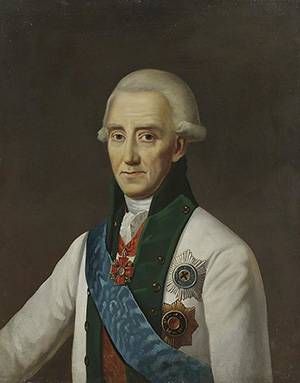
Like the masses of battleships at the Highest Review, heroes of national history are towering - their ranks are closed, the intervals between them are small. Vasily Chichagov occupies an honorable and, moreover, not quite appreciable place in this glorious and dense ranks. Not everyone will see his pennant behind a forest of masts, not everyone will remember his name, rank and merit. Nevertheless, this man, whose career did not develop at the coastal position of any master of ink or food stores, deserves to be remembered.
Vasily Yakovlevich Chichagov was born in a noble family of noble families near Kostroma February 28 (or March 11 in the new style) 1726 of the year. The antiquity of this surname and the circumstances of the salary to it of a noble rank cannot be determined, since all the relevant documentation burned in 1812 in the flames of the Moscow fire. It is only known that someone Artemy Chichagov was in the public service and died in the 1673 year, leaving three sons. Vasily Chichagov was a great-great-grandson to this ancestor.
In those days, they grew up quickly, and soon the question of the future life course of the young offspring was raised on the agenda. Prior to the leisurely and pacifying landlord life of a gentleman of the XIX century sample was far away - service for noblemen in the 18th century was a must. Like the overwhelming majority of representatives of his class, there were two ways before Vasily Chichagov: to be enrolled in the guard or to enroll in some metropolitan educational institution.
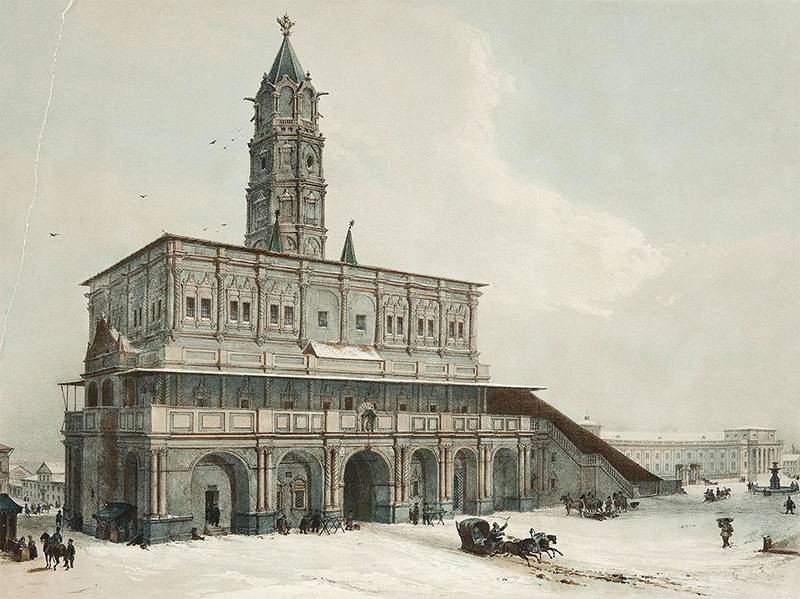
The stay in the capital was considered too burdensome for a poor family, and the boy was sent to study at the Navigatsky school located in Moscow. Created by Peter I, the school for the period being described has lost its monopoly on training personnel for the navy, as the Naval Academy functioned with might and main in St. Petersburg. Nevertheless, the Navigational school was a convenient place to build the children of poor, small landlords. The most diligent students, who have not lost their desire for education, had a chance to continue their studies at the Maritime Academy.
Vasily Chichagov proved himself to be a diligent and, most importantly, capable student, for which he was sent to the capital to continue his studies. The young man began his maritime career in the spring of 1742, at the height of the Russian-Swedish war. 10 April (21 in a new style) Vasily Chichagov was distributed to the fleet by a midshipman. At that time, the midshipmen signed the ships - after the navigation was completed, the young people returned to Kronstadt for theoretical studies. In 1744, Chichagov was listed as a coastal team. In March, 1745, for diligent service, was promoted to midshipmen. In November, 1751 of the year became the ship’s secretary, and in March, 1754, he was promoted to lieutenant.
The beginning of one of the biggest conflicts of the mid-18th century, the Seven Years War, was met by Vasily Chichagov while already serving in the frigate “Archangel Michael”. In the spring of 1757, the frigate not only cruised off the coast of Prussia, but was also used as a messenger ship to communicate with Denmark and Sweden. The important issue of Stockholm entering the war against Prussia and England was resolved, and it was necessary to clearly know the position of Copenhagen, in whose hands there were straits leading to the Baltic Sea — the threat of the passage of the British fleet through them was considered.
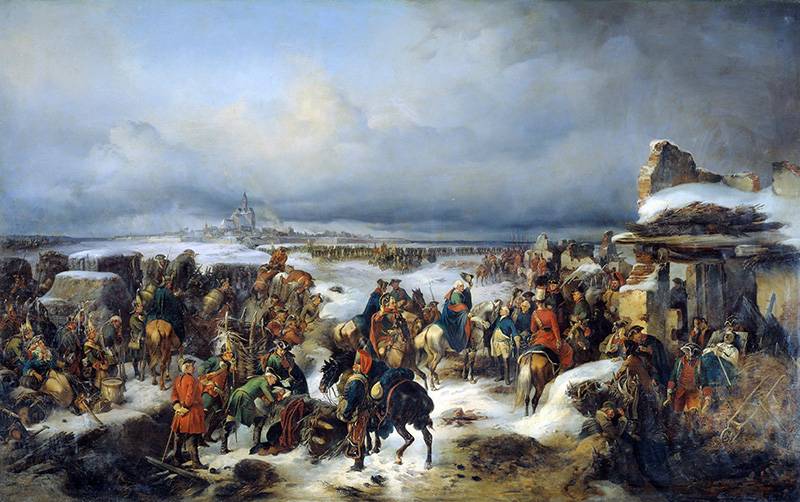
In March, 1758 Chichagov received another rank - lieutenant commander. In 1761, he took an active part in the operation of the Russian-Swedish fleet during the third siege of the fortress of Kolberg, earning the praise of Vice-Admiral Andrei Ivanovich Polyansky. In April, 1762, Chichagov became captain of the 2 rank. In the same year, he commanded the battleship Saint Catherine during its passage from St. Petersburg to Kronstadt.
After the short reign of Peter III, marked by a peace treaty with a recent enemy - Prussia and the conclusion of an allied agreement with King Frederick II, Catherine II ascended to the throne with the active help of the guards bayonets. Many officers linked their career hopes and dreams with the new reign that had suddenly begun, but Chichagov was not lucky. According to slanders of ill-wishers, who are always and everywhere driven to the fury of nature capable and active, he fell into disgrace. Instead of the bridge of the battleship, Chichagov was entrusted with a mission to inspect warehouses with wood in Kazan.
With the assignment entrusted to him, the captain of the 2 rank managed to cope with his inherent responsibility, and the clouds thickened over his head began to gradually dissipate. At the end of April, 1764 Chichagov received the rank of captain of the 1 rank, and in early May, the Admiralty Board appointed him commander of the battleship Revel.
However, 1 of June of the same year in Chichagov’s career there was an unexpected and not the last turn in his life. The new captain of the 1 rank was sent as an assistant to the acting chief commander of the Port of Arkhangelsk, captain-commander P. A. Chaplin. The former person who held this position, Rear Admiral A. M. Davydov, died shortly before. In the near future, this appointment led to Chichagov’s participation in a single large-scale enterprise, the details of which were not subject to excessive publicity.
The idea of Lomonosov
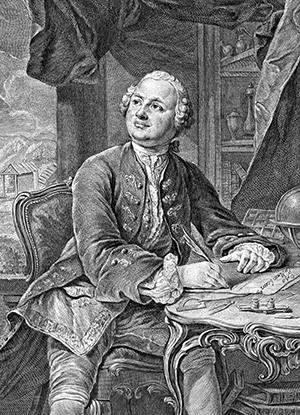
In 1763, the eminent Russian scientist, Mikhail Vasilyevich Lomonosov, completed his treatise "A brief description of various journeys through the northern seas and an indication of a possible passage by the Siberian Ocean to East India." This work, because of its importance for the state, Lomonosov considered it secret and intended for the first persons of the empire. Soon the scientist managed to get an audience with Catherine II. On it, Lomonosov, in addition to such pleasant and memorable nuances as the gift of a mosaic portrait to Her Majesty and the just-published work “Metallurgy”, acquainted the sovereign with “A brief description of various journeys”. Possessing an extraordinary intelligence, Ekaterina quickly appreciated the essence of the idea proposed by Lomonosov: to find a way through the polar waters into the Pacific Ocean, with the subsequent organization of trade with eastern countries. Soon after the aforementioned highest audience, Lomonosov was granted the rank of state councilor with an impressive salary for those times in 1875 rubles per year. It is necessary to think that the rank and salary were granted to Mikhail Vasilyevich not only for the mosaic portrait of the empress with a soul.
Acquaintance of Catherine with the labor of a Russian scientist eventually became one of the main impulses that triggered the process that led to the organization of a secret polar expedition. She had to prove in practice the possibility of maritime communication with the Pacific Ocean. It should be noted that the very concept of reaching India and China by traveling through the northern, polar waters was not new. It was born at the very dawn of the era of the Great Geographical Discoveries along with the suggestion of the existence of the Northwest Passage. In the middle of the 16th century, the British expedition led by Hugh Willoughby and Richard Chensler. Later the same task was set by the Dutchman Willem Barents.
However, the harsh Arctic reliably guarded its possession from unwanted guests, and many of them were taken to their possessions forever. In 1603, Henry Hudson was able to reach the coordinates of 80 ° 23 "off the west coast of Svalbard, but when confronted with impassable ice, he was forced to turn back. This record of moving to the north remained unbroken for almost a century and a half, water, set in the days of Giovanni Caboto, remained open.
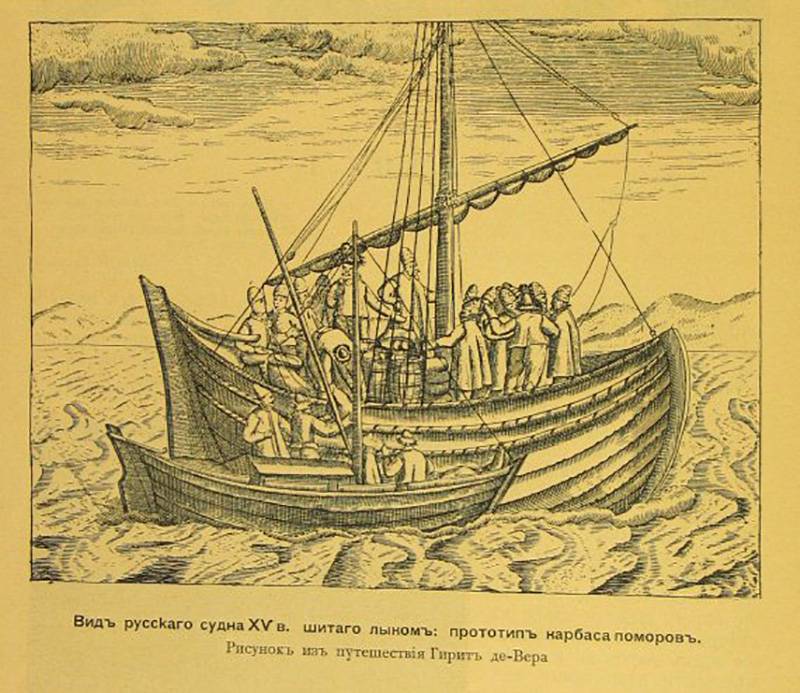
For a long time this harsh region was known to Russian pomomor - they repeatedly made trips to the island of Spitsbergen, which they called Grumant, and went to the shores of the inhospitable New Barents Earth. And it is quite possible that in several tricks we got to the shores of Alaska long before the Bering and Chirikov expeditions. Lomonosov, himself released from the coast, knew the peculiarities of the north not only from books. Based on his scientific experience and reworked experience of the Pomor, the Russian scientist suggested that there is no land around the pole, and in the summer months there is a large amount of ice-free water, which could be used to make an unobstructed transition across the pole into the Pacific Ocean.
The temptation to trade with the rich countries of the East, bypassing the very long and difficult route through the Atlantic and the Indian or Pacific Ocean, was too great. In addition, in St. Petersburg, the Aleutian Islands and other so far neutral territories of the east coast of North America, where the vector of trade and territorial expansion could be directed, abound in fur and sea animals, were already aware of them.
By the way, Mikhail Vasilyevich had long been working on his concept: back in 1755, from his pen came a detailed work on the possibility of sailing to the East Indies, using the "Siberian Ocean". Some of the ranks of the Admiralty were inspired by some, and not without reason, skepticism, but the attention with which the young empress reacted to the scientist's report inspired those who were more optimistic. The latter included none other than a member of the Admiralty Board, a lieutenant-general, Count Ivan Grigorievich Chernyshev, who later became, with full approval from above, the main locomotive of the project of the future expedition.
Under the leadership of Chernyshev and the outstanding Russian scientist and cartographer, Vice Admiral Alexei Ivanovich Nagaev, an expedition plan was drawn up. The preparation of the plan was greatly facilitated by the detailed and lengthy recommendations of Lomonosov himself. He proposed to send small strong vessels with reinforced plating and supplied with provisions for a long time. The personnel were supposed to be recruited from experienced, knowledgeable officers and lower ranks, who are familiar with the north and preferably have experience in navigation in the northern waters. The scientist stressed the need to include in the upcoming expedition of Pomorians, which could provide invaluable assistance with their experience and knowledge.
The expedition itself was to consist of two groups. The first detachment was to leave Arkhangelsk and, moving north, pass between Spitsbergen and Greenland and reach polar latitudes, where, according to Lomonosov’s calculations, there should be free of ice water. Further it was supposed to reach the Bering Strait without difficulty. Towards the Archangel detachment was planned to send a similar from Okhotsk. He had to move north along the Far Eastern coasts, at the same time exploring and securing new territories for Russia. The proposed meeting was to take place in the Bering Strait area. Special identification signals have been developed.
Polar explorer
The company began to gain momentum. Already on 4 in May of 1764, Catherine II directed the Admiralty Board to begin the selection of personnel, and on May 17, the commander of the Port of Arkhangelsk received orders to prepare suitable vessels. On the island of Svalbard it was planned to equip an intermediate base - there it was necessary to prepare food in the right quantity and build houses for possible wintering. The enthusiasm of the authorities was so persistent and impatient that, rushing, they wanted to send an expedition as early as this year, 1764.
However, as often happens when the desire is far ahead of the possibilities, circumstances are different. The available ships were not suitable for a long voyage in the ice, provisions were not procured in the right quantity, especially not transported to Svalbard. It was decided to build expedition ships in Arkhangelsk on a special project, to procure provisions in sufficient quantities, avoiding theft in the same cases in the absence of quality.
The construction and equipment of the expedition ships was to be observed by the captain of the Arkhangelsk port, captain-commander Peter Avraamovich Chaplin, who had valuable experience in preparing and participating in the 1 Kamchatka expedition Vitus Beringa 1727 – 1729 Shipbuilding works were supervised by English shipmaster James Lam, a specially hired and sent to Arkhangelsk.
As the head of the expedition and commander of the flagship 25 on June 1764, the Admiralty Board approved the captain of 1 rank Vasily Yakovlevich Chichagov. The two smaller ships were to be commanded by lieutenant commander Vasily Babayev and Nikifor Panov. Three lieutenants were appointed to help them: P. Poyarkov, P. Bornovolokov and F. Ozerov. By special decree of the Empress, the personnel of the expedition received a double salary during it. 1 July 1764 of the year Vasily Yakovlevich Chichagov became the captain of the brigadier rank, and the captain-lieutenant Nikifor Panov became the captain of the 2 rank.
In early July, the commanders, together with part of the crews, left for Arkhangelsk. The construction of three ships, which, without further ado, was named after their commanders, was already in full swing. The flagship "Chichagov" had 16 guns and 74 team man. The crews of 10-gun "Babaeva" and "Panova" numbered 48 people. The sides of the ships were reinforced with additional plating, the supply of provisions was calculated for six months.
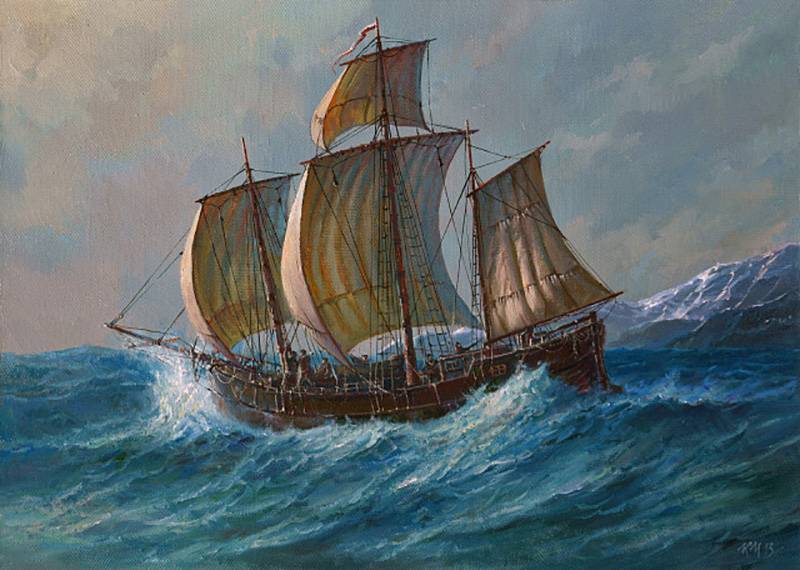
While the ships listed were hastily retrofitted, a flotilla commanded by Lieutenant Mikhail Nemtinov, consisting of Elephant transport and five hired Pomeranian ships, emerged from Arkhangelsk. They carried on Svalbard provisions, disassembled huts, bath, wood and other materials. In early August, this flotilla reached the Bay of Clockby, or the Bell Bay, where it carried out the planned unloading. Leaving the support team of 17 on the shore for manning the winter quarters, the flotilla returned to Arkhangelsk.
1 September 1764, the expedition ships commanded by Captain 1 Rank Vasily Yakovlevich Chichagov left Arkhangelsk and hibernated in Korabelnaya harbor on the Kola Peninsula, renamed Chichagov in Ekaterininskaya. The total number of participants in the voyage was 178 people, including almost 30 people experienced coastal industrialists.
Wintering in this well-known and convenient place was a success, and on May 9 of the next, 1765, the expedition left Catherine Harbor and headed north. She was met by unfavorable weather with a cold wind. May 16 behind the stern remained Bear Island, beyond which the ships saw the first floating ice. As we moved to Svalbard, the amount of ice increased, and fogs were not uncommon.
On the way they met a single fishing ship from Hamburg. His captain, who turned out to be a Dutchman, visited Chichagov and had a long conversation with the expedition leader and his officers. The captain complained that the ice situation this year is very difficult, so his fishing leaves much to be desired. His ship, despite the well-fortified cladding, suffered from ice and is now returning for repair.
June 16 Chichagov and his subordinates finally reached the bay of Klokbay, where sailors abandoned last year were already eagerly waiting for them. It turned out that they were all there, although they suffered from diseases in winter. Getting up on anchors, we began loading supplies and putting ships in order. June 26 in the bay caught up with a lot of ice, which began to hit the board. By order of Chichagov, the crews cut down docks around their ships in the standing ice for protection from the elements.
On July 3, when large areas of ice-free water appeared, the ships left Klokbai Bay and, according to the instructions received, moved westward, gradually deviating to the north. At first, Chichagov and his people saw only free water around them, but on July 9 around the ships again appeared ice in excess. As it progressed, it became more and more, and there were no signs of an ice-free polar sea. The situation deteriorated, the ships desperately maneuvered among the ice, often changing course.
23 July 1765 expedition Vasily Yakovlevich Chichagov reached the coordinates 80 degrees 26 minutes north latitude, thereby improving the result of Henry Hudson that remained unchanged for almost a century and a half. However, in front of the Russian ships were only solid ice fields.
On July 29, Chichagov assembled an officer council, at which it was decided to return to Arkhangelsk due to the impossibility of moving forward. 20 August 1765 three expedition ships returned to Arkhangelsk. The first attempt to reach the Pacific Ocean through the northern waters was not crowned with success, but Vasily Yakovlevich Chichagov was determined to repeat his attempt in the next 1765 year.
To be continued ...
Information